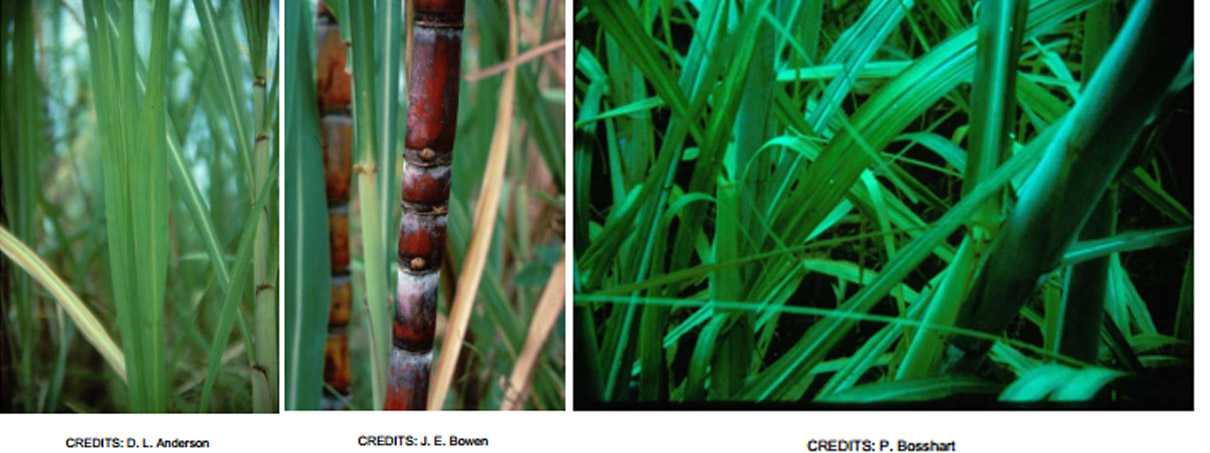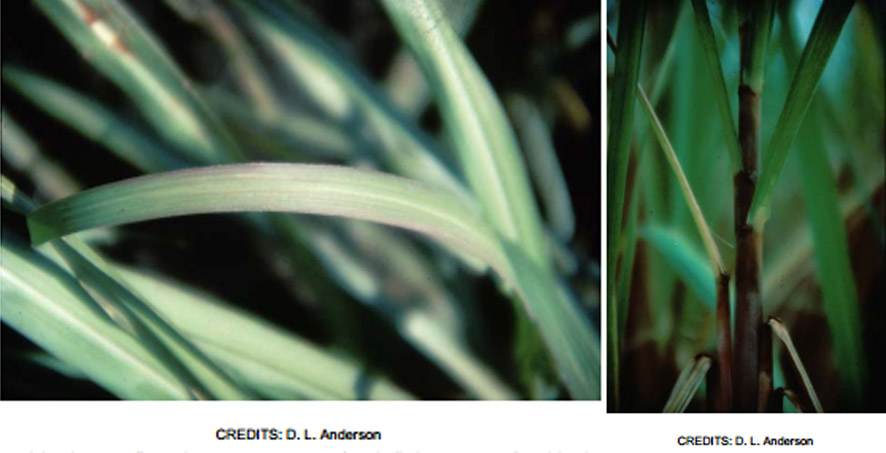Nutrient Deficiencies in Sugarcane
1. Nitrogen (N)
Nitrogen deficiency appears first on older leaves which gradually spread over whole plant and older leaves die back. Young leaves show pale-green color with slender stalks with prolonged nitrogen deficiency. Internodes become shorter in nitrogen deficiency. With nitrogen deficiency leaf sheaths separate early from the stalk and show pale-green to yellow color.

2. Phosphorus (P)
P deficiency is also manifested on older leaves. with P deficiency reddening of leaves occurs on young plants. It causes short and slender stalks and older leaves eventually die back prematuraly.

3. Potassium (K)
K deficiency show first on older leaves and appear as localized mottling or chlorosis. A peculiar symptom of K deficiency is red discoloration of upper surface of the midrib which may be misconceived with insect feeding damage. Under moderate K deficiency, young leaves may appear dark green and stalks become slender. Long-term defeciency, however, may result in affected meristem development shown by spindle distortion and a "bunched top" or "fan" appearance.

4. Boron (B)
Deficiency symptoms of B appear on young leaves. Young leaves have a gradual degree of cholorosis but they do not wilt. Distorted leaves, specifically along the leaf margins of young leaves is also a symptom of B deficiency. Immature leaves may not unfold from the whorl in severe deficiency. The epical meristem may die in B deficiency. Transluscent lesions or "water sacks" may form along the leaf margins as the deficincy progesses. In severe deficiecny young plants become brittle and show many tillers. However, with B toxicity, leaf margins may become chlorotic.

5. Iron (Fe)
The defeciency first appears on young leaves. Often occurs adjascent to unaffected plants. With plant growth and root development the symptoms may subside. Iron deficiency has been reported on high pH calcarious soils in Brazil. It has also been reported in Barbados on similar soils where damage due to insects and adverse soil conditions (i.e. salts) give this deficiency unusual spatial characteristics.





